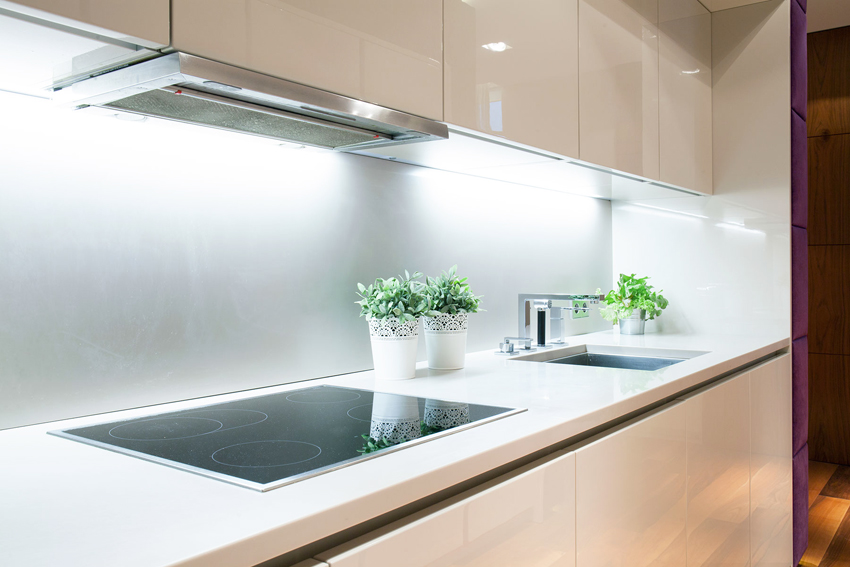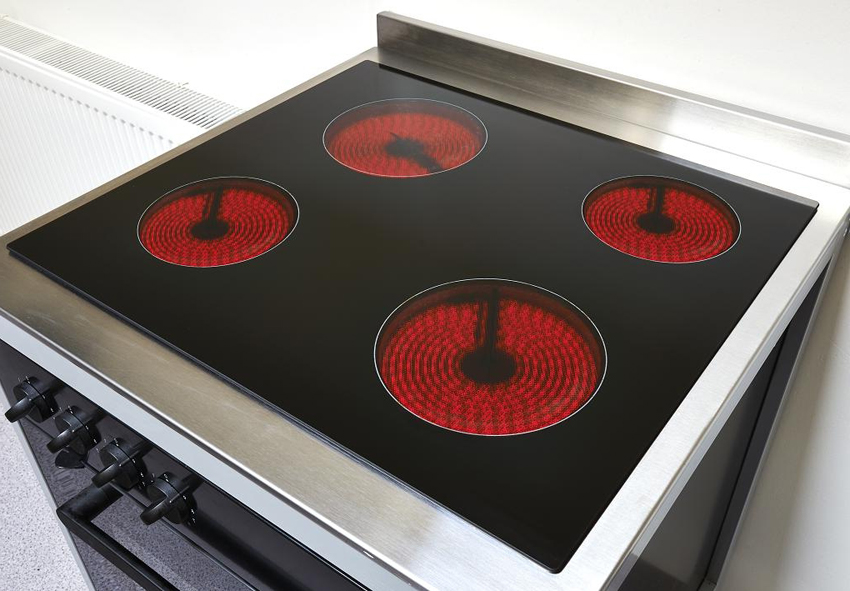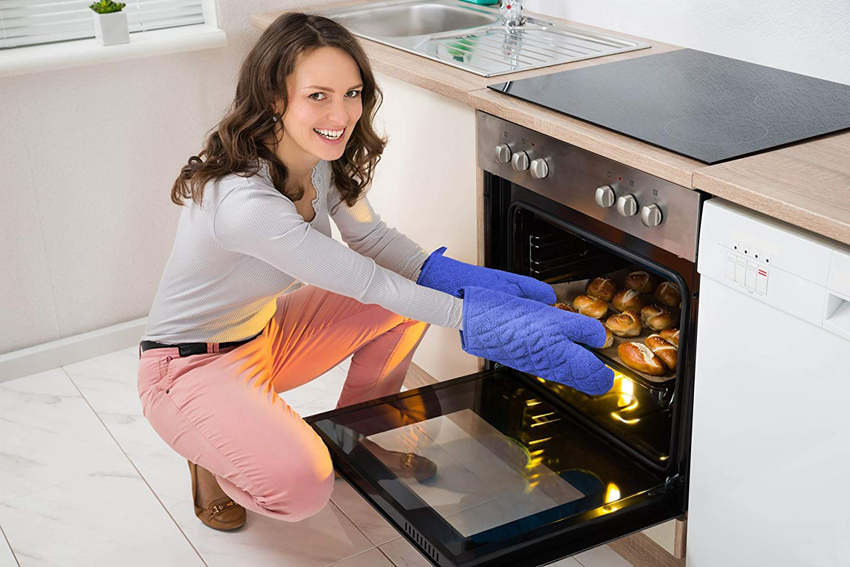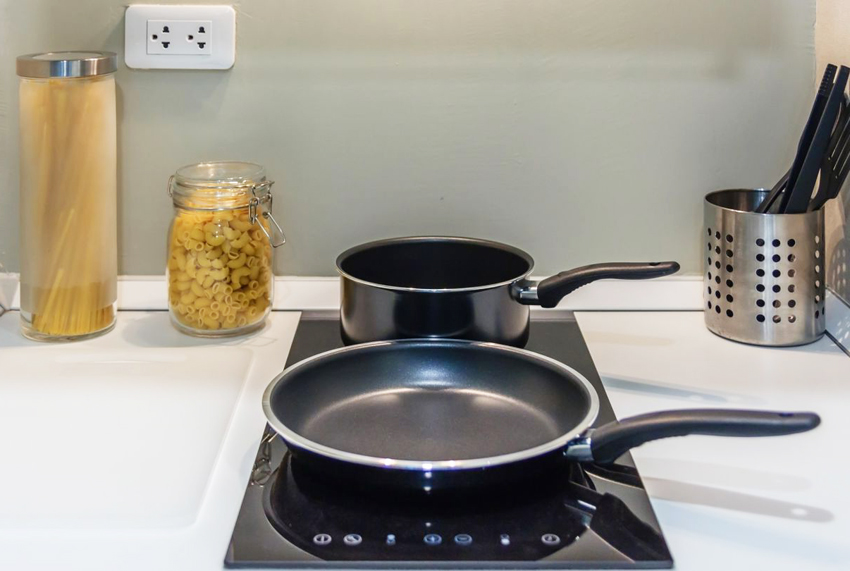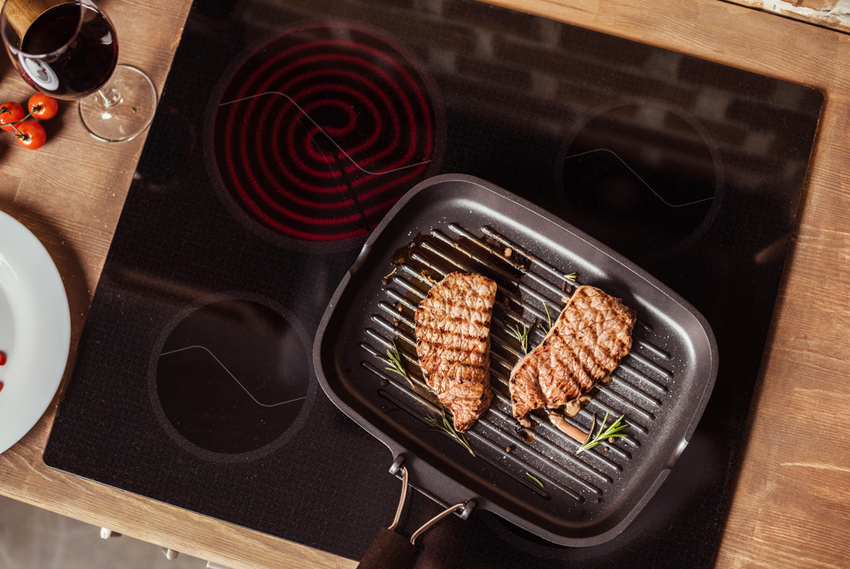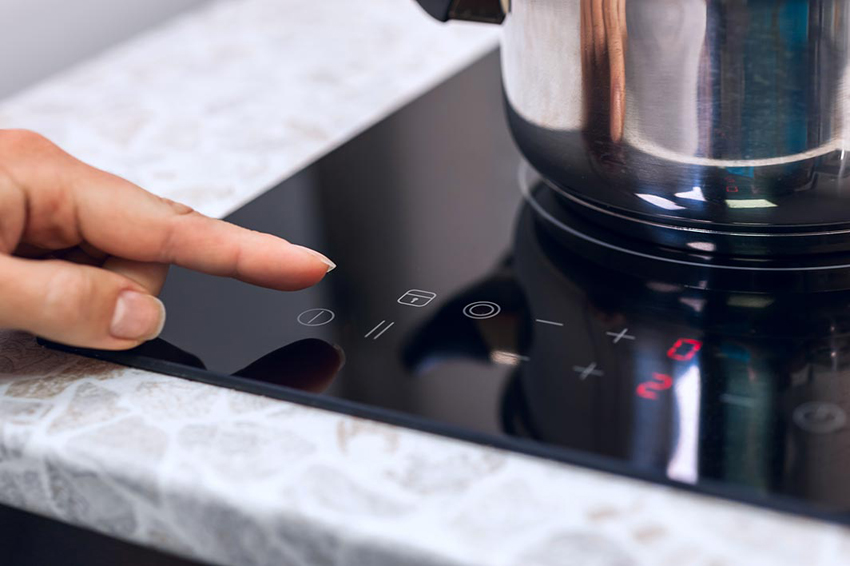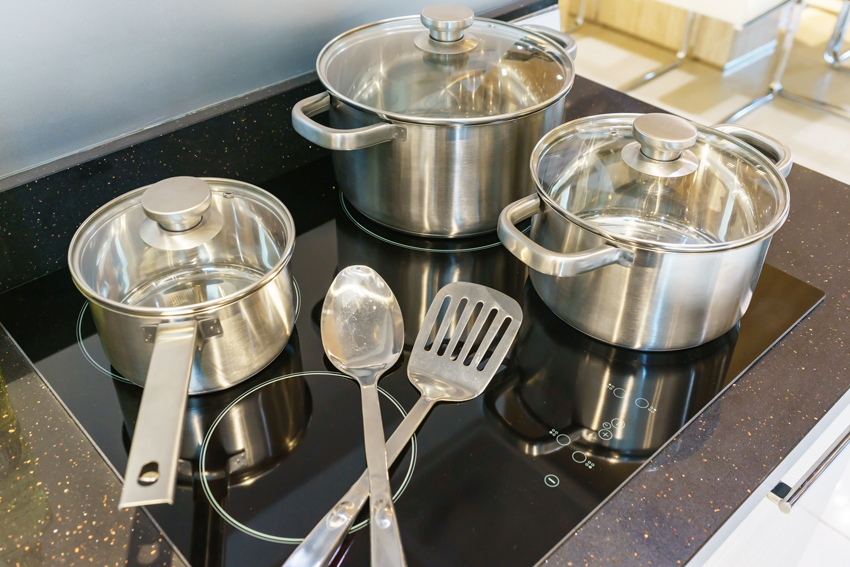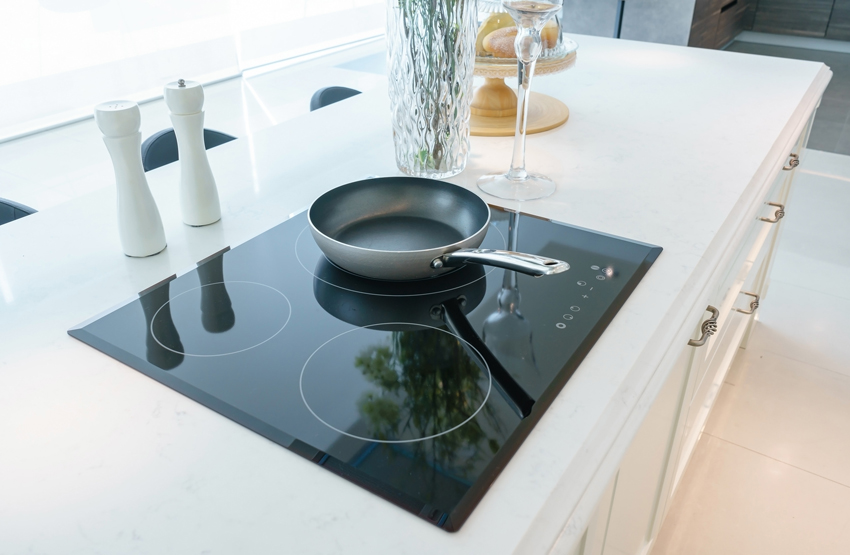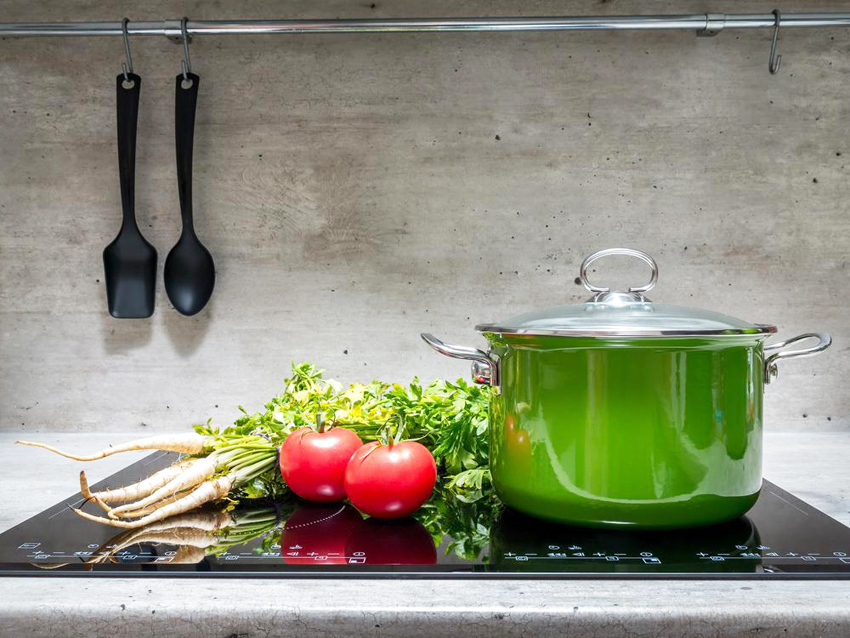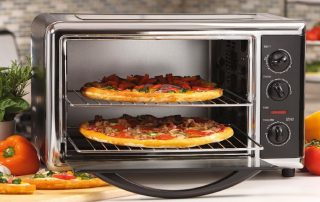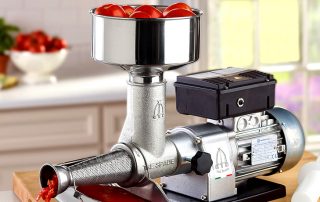The choice of a hob for the kitchen is a responsible event, on which the efficiency of the cooking process and the convenience of using the stove depend. Today, modern slabs are presented in several versions, which differ in the principle of operation, functionality, appearance and price. When deciding which is better: an induction or an electric hob, it is important to study the strengths and weaknesses of each option.
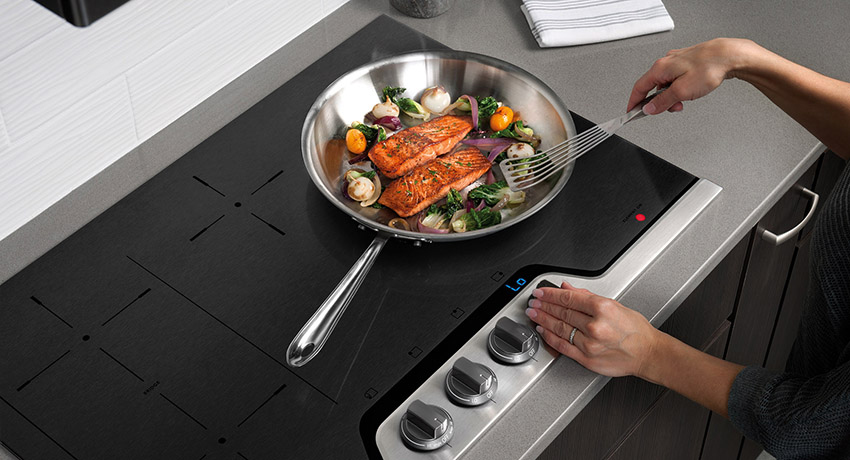
Today, the most popular are two types cooking surfaceth: induction and electrical
Content [Hide]
- 1 Which is better: induction or electric stove, the pros and cons of products
- 2 How an induction cooker works: characteristics and distinctive features of the panel
- 3 Which hob to choose: induction or electric
- 4 What is the difference between an induction panel and an electric panel: comparison of characteristics
- 5 What is the difference between an induction panel and an electric one: operational properties
- 6 What is the difference between an induction cooker and an electric cooker: functions and options of products
- 7 Choice of hobs: rating of manufacturers
Which is better: induction or electric stove, the pros and cons of products
To understand the question of how an induction cooker differs from an electric one, you must start by studying the principle of operation of each device. The electrical device immediately heats the hotplate to the required temperature. The heat is then transferred to the cookware in the work area. Heat is generated by passing an electric current through the conductor.
The latter is a resistive heating element, which is characterized by a high resistivity value. The conductor is represented by a spiral, which can be open or hidden under the burner.
Among the distinctive advantages of an electric stove are the following:
- silent operation of the device;
- the ability to use any utensils;
- acceptable cost;
- the burners heat up for a long time and cool down slowly, thanks to which you can leave the finished dish on the surface so that it "reaches";
- a wide range of color and design variations, which allows you to choose a model for any interior style of the room;
- the surface does not need any special care, it can be easily and simply cleaned using a conventional detergent.
The disadvantages of the plate include:
- significant energy costs;
- the panel has a limit on the mass that it can withstand;
- a high degree of fire hazard increases the likelihood of traumatic burns.
How an induction cooker works: characteristics and distinctive features of the panel
What an induction cooker means will become clear when studying the principle of its operation. It is based on the phenomenon of electromagnetic induction. At the moment a high-frequency current flows through an induction coil with a winding of a copper conductor, it is transformed with the formation of an alternating electromagnetic field. At the moment of installation on the working area of the cookware, which has ferromagnetic properties, the resulting physical phenomenon promotes the movement of electrons located on the surface of the bottom of the product.
Thus, the process of heat release occurs, which is spent exclusively on heating the dishes. In this case, the surface of the slab remains cold. Thanks to its unique operating principle, the induction hob has several advantages:
- low cost of electricity, which is consumed exclusively to create an electromagnetic field in the closed conductor of the induction coil;
- maximum efficiency, which increases the efficiency of the device, as a result of which a minimum amount of time is spent on cooking;
- a high level of safety, which is ensured by the feature of the stove to start working at the moment the dishes are installed on it and to complete the process when there is no element on the burner;
- the ability of the surface of the plate to remain cold, which at the same time contributes to low energy costs and eliminates the possibility of getting burned;
- the ability to set the required heating temperature with an accuracy of 1 degree;
- automatic selection of settings to recognize the diameter of the dishes;
- equipment with a large number of functions and programs;
- easy and simple care that does not require the use of special products.
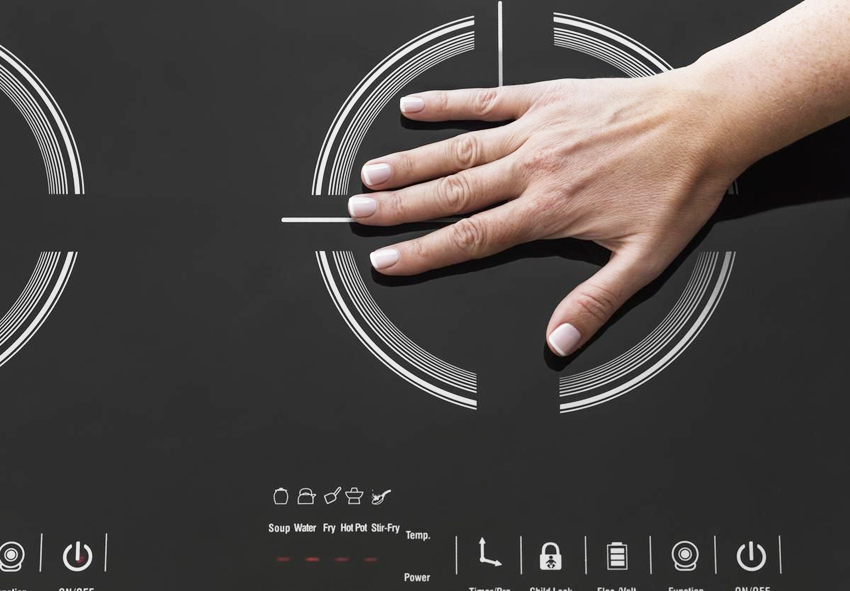
During operation of the induction hob, only the dishes are heated, and the panel itself remains cold
The disadvantages of the product include the following characteristics:
- the occurrence of specific noise during the operation of the surface, which is associated with the operation of the fans, cooling the coils;
- high cost of the surface in comparison with other types of panels;
- for an induction cooker, you must use special cookware;
- this device adversely affects the operation of other household appliances that are located very close to the surface of the device.
Important! Remove all jewelry and clocks when cooking on an induction hob. The former, when heated, can burn the skin, the latter are magnetized.
Which hob to choose: induction or electric
To decide which hob is better, you need to consider the technical characteristics of each. The induction hob consists of an induction coil, glass ceramic surface, insulation, control unit and frequency converter. In an electric stove, cast iron pancakes, rapid, halogen or Hi-Light burners can act as heating elements. The first option is located on steel or enamel surfaces. The rest are hidden under a glass-ceramic panel.
Halogen heating elements provide the highest efficiency. The perfect tandem of the rapid coil and the halogen light bulb makes the hotplate heat up quickly within seconds, thus ensuring maximum energy savings.
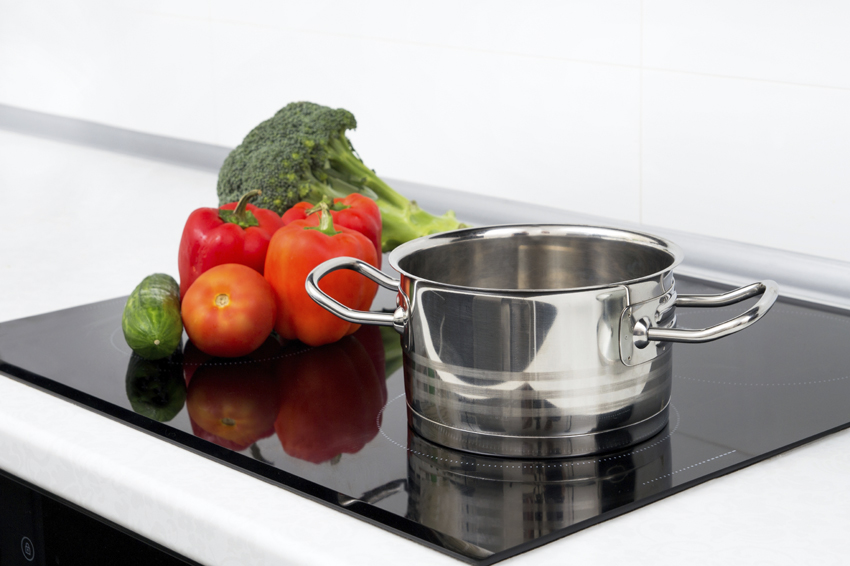
The surface of the induction hobs is made of glass ceramic, which increases the strength and service life of the panel
The induction panels are equipped with a glass-ceramic surface, which is strong and durable. However, it is not able to withstand impact or strong mechanical stress.The surface of the electric stove can be made of glass ceramics, stainless steel or enamelled. The last option is the cheapest. The surface can withstand various mechanical loads and high temperatures, does not require special maintenance, but can be damaged by abrasive materials or cleaning compounds.
The stainless steel panel has good technical and operational properties. However, it requires special care, which ensures an attractive appearance over a long period.
The glass-ceramic surface is the most requested option. It can be white or black. Patterned panels look original and stylish.
Which is better: an induction or electric hob, an overview of the parameters
Before choosing an electric stove, you should decide on the parameters of the product. Induction and electrical panels can be of standard or custom sizes, which allows you to integrate the product into any kitchen set. The minimum width of the products is 30 cm for the first slab and 26 cm for the second. In terms of shape, induction cookers are presented in the form of a rectangle or square, and electric cookers can also be made in the form of an oval, circle or semicircle.
Electric and induction cookers are dependent and independent. The first option is associated with an oven, which should be located in close proximity to the surface. In electrical models, the panel control unit is located directly on the cabinet.
When choosing an induction or electric hob, you should pay attention to the number of burners on the device. The first type of surface can have from 1 to 6 burners of different diameters, which allows you to use different containers. The number of burners for electric models is 2-5 pcs. For stoves with a glass-ceramic surface, the burners can be located in the same row in the form of a rhombus, square, triangle or semicircle.
The total power of the induction hob is in the range of 3-12 kW, electric - 3-10 kW. The operation of both types of plates can be controlled by touch or mechanical. The first option is more convenient. In addition, each hotplate can have an individual set of sensor buttons.
What is the difference between an induction panel and an electric panel: comparison of characteristics
To understand the question of which stove is better: induction or electric, a comparison of the main parameters of devices, such as:
- speed and degree of heating;
- requirements for the utensils used;
- efficiency;
- electrical energy consumption;
- work safety;
- noise level;
- surface characteristic;
- functionality;
- influence on other elements of household appliances.
One of the main differences between an induction cooker and a glass-ceramic electric surface is the minimum power consumption. The first type of surface heats up instantly and cools quickly. The electric current is expended exclusively to generate a magnetic current in the induction coil. During temperature adjustment, it changes instantly. There is no need to wait for a long time for the hotplate to heat up or cool down.
Important! Induction models consume 1.5 times less electricity in comparison with electrical counterparts.
The induction hob is characterized by the highest level of efficiency, which is 90%. For comparison, it can be noted that this indicator for a glass-ceramic electric panel is 55%, for a gas one - 60%.
Considering the main differences between induction and electric stoves, one cannot fail to mention the high cooking speed on an induction surface, which significantly exceeds the capabilities of electric models. The generated heat is not spent on heating the hotplate and the surface. It immediately warms up the dishes.
It will take 2-3 minutes to heat 1 liter of water on an induction hob. In this case, the hotplate will reach a temperature of no more than 60 ° C. Electromagnetic currents are directed exclusively at food, which in this case is cooked several times faster. The electric stove will take about 5 minutes to heat up the hotplate and another 10-13 minutes for the water in the pot to boil. In this case, the temperature of the heating element can reach 400 ° C.
Important! The electric stove heats food unevenly and may cause it to burn.
The difference between an induction hob and an electric hob in terms of safety
Answering the question, what is the difference between an induction hob and an electric one, one cannot fail to note the high level of safety of the first. The stove starts to work only when the dishes are installed on its working area, the diameter of which should occupy at least 70% of the area of the burner. After removing the element from the plate, it turns off. In this case, the surface remains cold, which eliminates the possibility of getting burned at the time of accidental touching the panel.
The hotplate of the electric stove begins to heat up immediately after switching on to a high temperature and then cools down for a long time after the end of the operation process. In this case, the risk of getting burned during involuntary contact with the surface increases several times.
Important! The induction hob will not work if you put a foreign object on it. This nuance is very relevant for families with small children.
Studying the difference between induction and electric panels in terms of safety, one cannot fail to mention that the first type of cooker is equipped with an automatic shutdown option. This happens, for example, if the water in a saucepan boils and gets to the surface. It will also turn off if the water in the pan has boiled away, since the cooker detects an empty container. Such an opportunity will prevent damage to dishes.
On the other hand, it is only on an electric surface that you can set the minimum temperature, thanks to which the dish can languish without user intervention.
Which hobs are better: induction or electric
Considering the question of how an electric hob differs from an induction one, you should pay attention to the silent operation of the first. The second type of model emits a specific noise during operation. It occurs as a result of the operation of fans, which are located near the induction burners and are aimed at cooling them. Especially sensitive people may not like this feature.
Related article:
Electric hob: a stylish assistant for a demanding housewife
The difference is a dependent on an independent panel. Electric stove control options. Additional features and manufacturers of hobs.
Studying the difference between electric and induction hobs, it is necessary to mention that the first type of hob does not require the use of special cookware. The main condition is the use of containers suitable for the stove. The induction hob requires a special cookware with a bottom made of ferromagnetic material. These are cast iron and stainless steel products. Ceramic and glass objects must not be used.
Helpful advice! For an induction hob, you can use ordinary cookware, the bottom of which is sealed with a special magnetic sticker. It can be purchased at the store.
A special feature of the induction hob is the ability to recognize the bottom of dishes with a diameter of at least 12 cm. Smaller containers, such as turks, can be used in conjunction with a special adapter.
What is the difference between an induction panel and an electric one: operational properties
Before choosing a hob, you need to study its performance characteristics. The induction hob is more durable. Since its surface does not heat up during operation, accidentally falling food or greasy splashes can be easily and quickly cleaned with a damp sponge. The electric stove is afraid of salt particles, burnt sugar and pieces of burnt food, which leave marks on the surface, damaging the protective film.
The induction hob is equipped with a large number of automatic programs, which makes the cooking process simpler and easier. The surface is able to instantly react to a change in program and temperature regime.
Considering the question of which stove is better: induction or electric, one cannot but mention the effect of devices on other household appliances located nearby. The electrical panel must not be installed next to the refrigerator. By heating up during cooking, the stove will heat up nearby items. Induction surfaces should be located at some distance from household appliances, since the influence of the magnetic field has a negative effect on their operation.
Useful advice! If difficulties arose when choosing the type of product, you can give preference to a combined induction and electric hob, which combines the features of both options.

The induction hob is easier to clean, since dropped food or greasy splashes on a cold surface will not burn
What is the difference between an induction cooker and an electric cooker: functions and options of products
When choosing an induction or electric stove, due attention should be paid to the functionality of the devices. The first type of surface has the ability to smoothly adjust the power level of the device, which ensures the maintenance of the required temperature regime. There can be from 5 to 17. The electric hob is also equipped with an option that allows you to adjust the power. However, there are a limited number of such modes - up to 4 pcs.
All induction cookers and some models of electrical appliances are equipped with an auto-off function, thanks to which the device turns off the moment liquid hits its surface. Both stove options necessarily have a timer with an audible signal, which contributes to the timely shutdown of the burners. For induction hobs, you can also set the cooking start time.
A unique feature of induction hobs is the Power Boost option, thanks to which you can borrow the power from an adjacent hotplate to maximize its value in a specific cooking zone. Also, this type of hob has a built-in energy consumption control sensor, thanks to which the device can be configured to work with a minimum consumption of resources.
The induction hob will not work if there is no cookware on it. The electric cooker can also be provided with an option that disables the panel from which the container is removed. Induction surfaces can have a function of a short break in operation for 3 minutes. They are equipped with a residual heat and temperature maintenance program.
Important! Both stove options necessarily have a child lock function.
Choice of hobs: rating of manufacturers
When choosing a hob, it is very important to pay attention to the manufacturer of the appliance.All manufacturers that produce induction and electric hobs can be roughly divided into three categories depending on the quality of the product:
- professional models of the elite class are produced by Miele, AEG, Gaggenau, Kuppersbusch;
- products of the middle category, which are characterized by an ideal ratio of price and quality, belong to the companies Bosch, Siemens, Whirlpool, Gorenje, Zanussi, Electrolux;
- a budget series of good quality is offered by manufacturers Hansa, Ariston, Ardo.
Elite class models are most often purchased for cafes and restaurants. They are characterized by the maximum number of heating zones, high power and extended functionality. The main feature of such models is their high cost, which is not justified for the use of products in modern kitchens.
Based on numerous reviews, mid-range hobs from worldwide manufacturers are in the highest demand. This is due to the wide range of reliable products that the average family can afford. The models are distinguished by decent workmanship, an expanded set of necessary functions and programs used in everyday life, and an original design, thanks to which the products fit perfectly into the modern kitchen interior.
Models from the budget category are characterized by good quality and affordable prices. These are mainly products equipped with a minimum set of functions.
Which hob to choose: distinctive features of models of world brands
Based on numerous reviews, Bosch and Siemens hobs are the most popular. This is due to a wide range of induction and electric models, which are characterized by high quality workmanship, attractive appearance and expanded functionality of products.
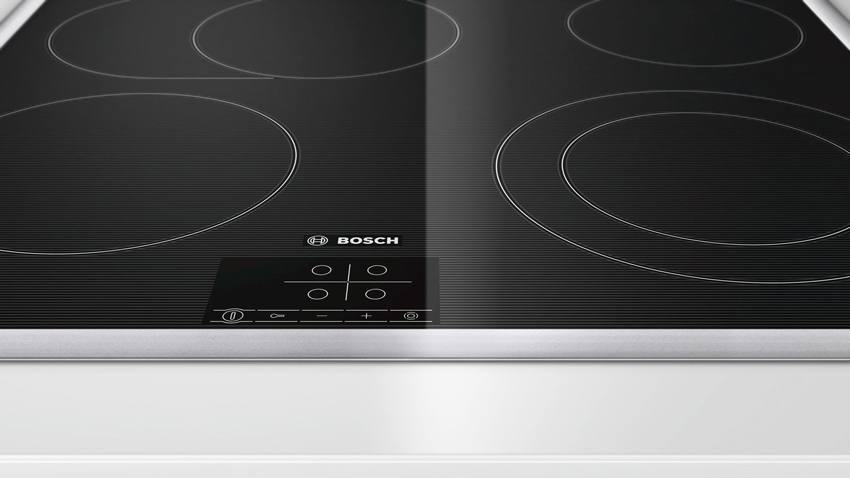
Bosch manufactures High Speed glass ceramic hobs, which are characterized by high strength, wear resistance and durability
Bosch manufactures models with High Speed glass ceramic surface, which is characterized by high strength, wear resistance and durability. Both companies offer several types of models for 2 burners. The hobs of these manufacturers have one common drawback - the high cost of the product. An electric stove can be purchased for 25-30 thousand rubles, and an induction one for 35-70 thousand rubles.
Multifunctional devices with a convenient control mode, pleasant design and relatively affordable cost are produced by well-known companies Gorenje and Electrolux. Electric burner hobs have a proprietary Super Power technical option, thanks to which you can increase the heating level on all burners at the same time. This helps to reduce the time spent on the cooking process.
Some Electrolux induction hobs have a hotplate with a special Wok groove in the glass-ceramic surface for placing a frying pan. The company specializes in the production of combined panels with gas burners and induction hobs. The price of induction-type hobs from Gorenje and Electrolux is in the range of 25-30 thousand rubles, and electric ones - 15-20 thousand rubles.
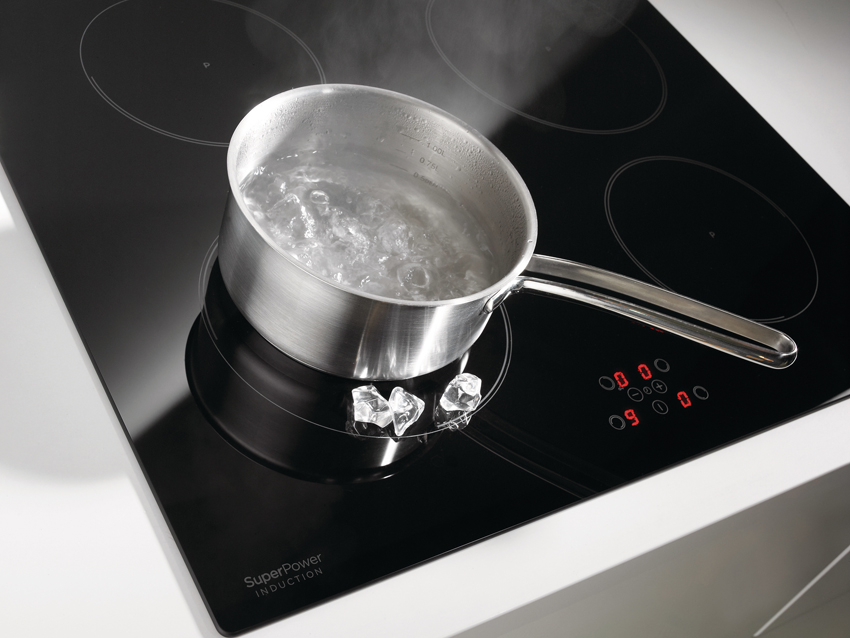
Gorenje ranges are equipped with the Super Power technical option, thanks to which you can increase the heating level on all hotplates at the same time
Among the budget models, the most popular are Ariston and Hansa hobs. The cost of induction surfaces is 15-18 thousand rubles, and electric ones - 10-12 thousand rubles. Plates are equipped with the necessary set of functions and have an original design.
When choosing an induction or electric panel, it is important to study the features of each option, which differ in the principle of operation, functionality and price.The induction hob enables more efficient operation with less energy consumption. However, such a surface requires special care, the use of special dishes and is characterized by a high cost.
It is impossible to say unequivocally which stove is better. If you still could not decide on the choice, you can give preference to the combined version of the hob with electric and induction burners.
